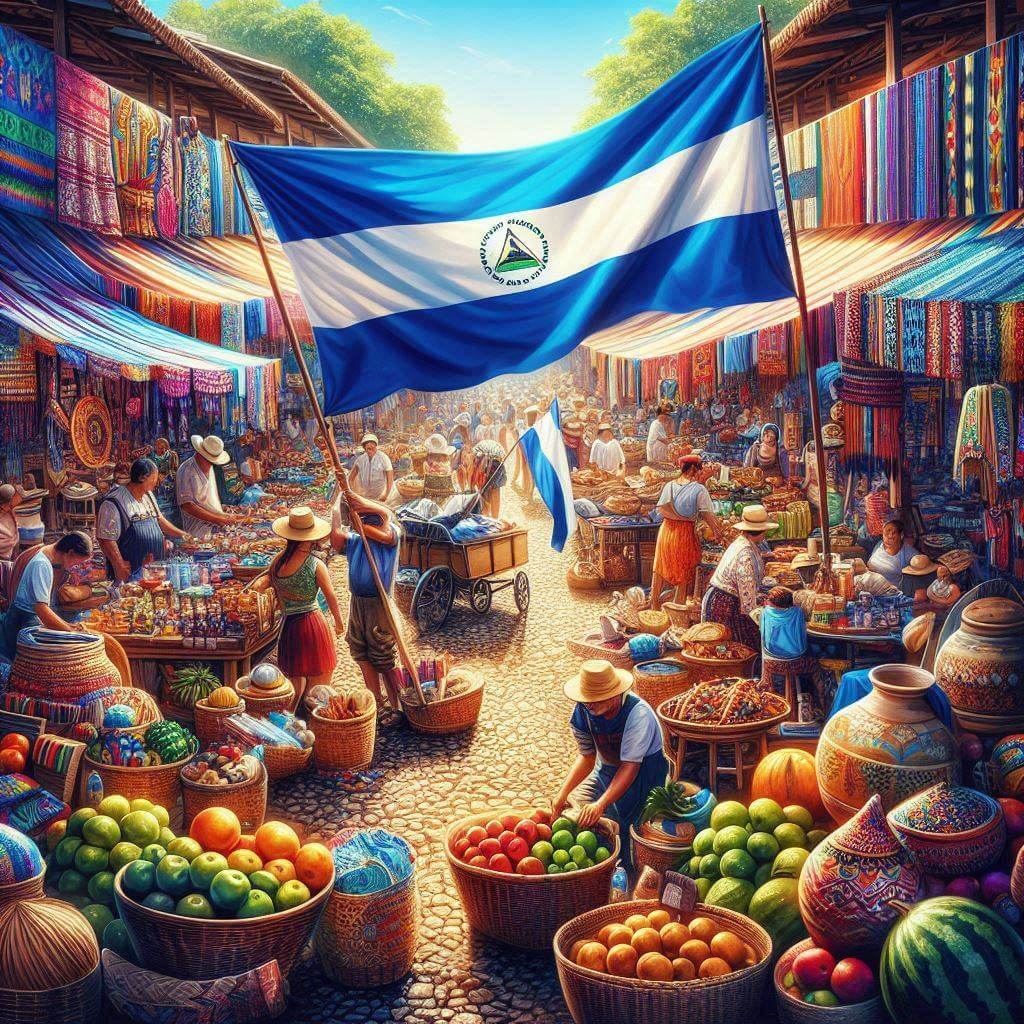The flag of Nicaragua features three horizontal stripes of blue, white, and blue, with the national coat of arms centered in the white stripe. This design combines elements of historical significance, natural beauty, and national aspirations, making it a powerful symbol of Nicaraguan identity and heritage.
Nicaragua information
| National Flag Day | September 15 |
| Sovereign state | Yes |
| Official name | Republic of Nicaragua |
| Capital | Managua |
| Population | 6,624,554 |
| Area | 130,373 km² |
| Currency | Córdoba (NIO) |
| Language | Spanish |
| Continent | North America |
| Region | Central America |
| Subregion | — |
| Borders | Honduras, Costa Rica |
| Timezone | Central Standard Time (CST) UTC-6 |
| Calling code | +505 |
| Top-level domain | .ni |
History of the Nicaraguan Flag
 The current design of the Nicaraguan flag was officially adopted on August 27, 1971, but its origins can be traced back to the flag of the Federal Republic of Central America, of which Nicaragua was a part from 1823 to 1838. The blue and white stripes have been a consistent element in various iterations of the Nicaraguan flag since independence. The addition of the coat of arms in the center has evolved over time, reflecting changes in the country's political landscape and national identity.
The current design of the Nicaraguan flag was officially adopted on August 27, 1971, but its origins can be traced back to the flag of the Federal Republic of Central America, of which Nicaragua was a part from 1823 to 1838. The blue and white stripes have been a consistent element in various iterations of the Nicaraguan flag since independence. The addition of the coat of arms in the center has evolved over time, reflecting changes in the country's political landscape and national identity.
Symbolism and Design of the Nicaraguan Flag
Every element of the Nicaraguan flag is rich with symbolism:
- The blue stripes represent the Pacific Ocean and the Caribbean Sea, which border Nicaragua to the west and east respectively.
- The white stripe symbolizes peace, unity, and the purity of the Nicaraguan people's intentions.
- The coat of arms in the center contains several symbolic elements:
- A triangle representing equality
- A rainbow symbolizing peace
- A Phrygian cap representing liberty
- Five volcanoes representing the five original member states of the Federal Republic of Central America
Usage and Significance of the Nicaraguan Flag
 The flag of Nicaragua is a source of national pride and is widely displayed throughout the country. It flies on government buildings, schools, and during national celebrations such as Independence Day on September 15. The flag plays a crucial role in fostering a sense of national identity and unity among Nicaraguans. It also represents Nicaragua in international forums, diplomatic events, and sporting competitions, symbolizing the country's sovereignty and place in the global community.
The flag of Nicaragua is a source of national pride and is widely displayed throughout the country. It flies on government buildings, schools, and during national celebrations such as Independence Day on September 15. The flag plays a crucial role in fostering a sense of national identity and unity among Nicaraguans. It also represents Nicaragua in international forums, diplomatic events, and sporting competitions, symbolizing the country's sovereignty and place in the global community.
Interesting Facts About the Nicaraguan Flag
- The Nicaraguan flag is sometimes referred to as "La Bandera Azul y Blanco" (The Blue and White Flag) due to its dominant colors.
- The coat of arms on the flag is one of the most complex among national flags, containing multiple elements that tell the story of Nicaragua's history and aspirations.
- The flag's design has remained largely consistent since Nicaragua's independence, with only minor modifications to the coat of arms over the years.
- Nicaragua is the largest country in Central America, and its flag reflects the nation's rich biodiversity, with references to its volcanic landscape and two coastlines.
- The Phrygian cap in the coat of arms is a symbol of liberty that dates back to ancient Rome and was widely used in Latin American independence movements.